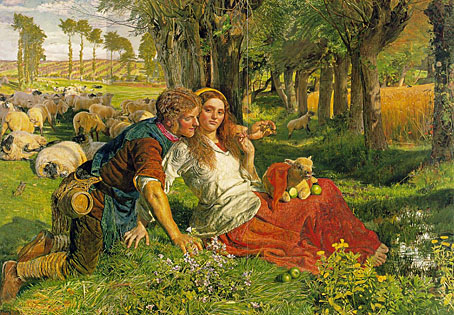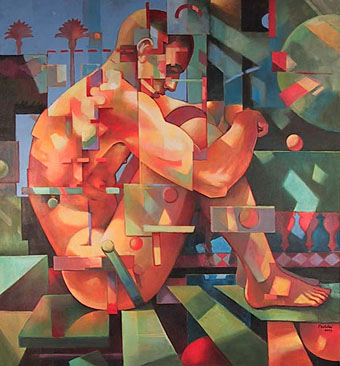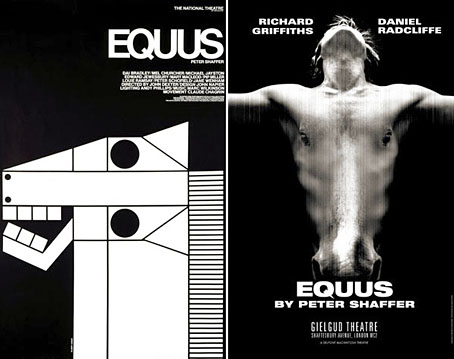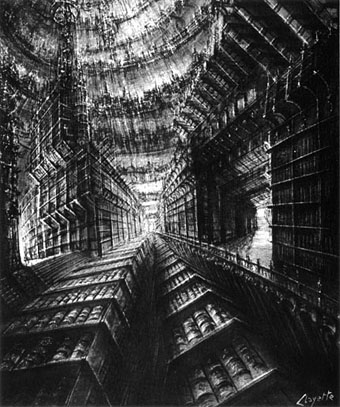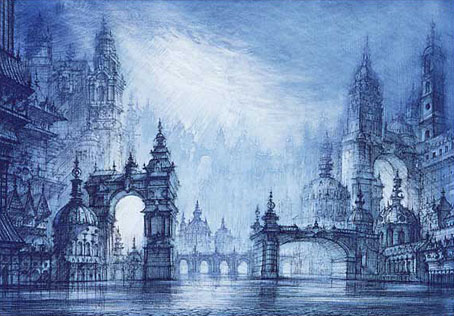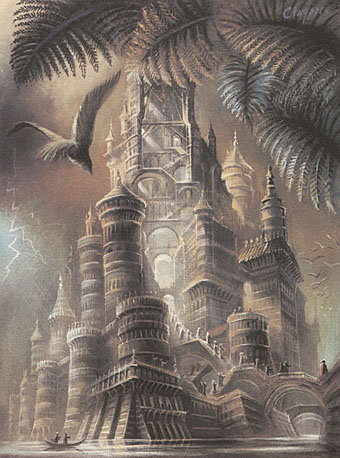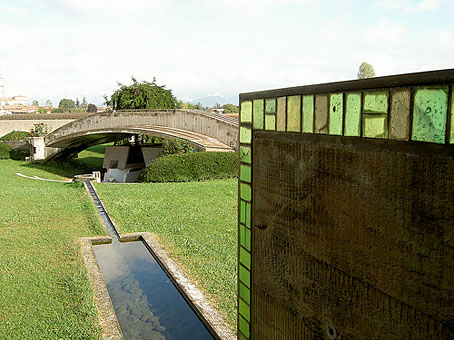The Hireling Shepherd by William Holman Hunt (1851).
Holman Hunt and the Pre-Raphaelite Vision is an exhibition of Victorian paintings at Manchester’s City Art Gallery which they describe as “the first international exhibition in over 40 years dedicated to the life and work of Pre-Raphaelite master William Holman Hunt.” It helps that they own some prime examples of Hunt’s work, including The Hireling Shepherd, a painting I used to look at a great deal when I first moved to Manchester.
This isn’t my favourite Holman Hunt work—that would be The Lady of Shalott—but The Hireling Shepherd has a wealth of the insane detail which was his forte. For anyone who’s tried painting in this hyper-real manner it’s good seeing how he rendered the flowers, grass and fabrics. The picture is laden with typical Victorian morality, of course; the shepherd is distracted so his flock is straying. That never interested me, far more fascinating was looking at the original of the work which Brian Aldiss uses in his experimental science fiction novel, Report on Probability A (1968). In one of Aldiss’s parallel universes Holman Hunt’s painting is exactly the same as the one we know but for the addition of a book entitled Low Point X which can be seen lying incongruously on the grass. Whenever I’ve been in the City Gallery I’m always disappointed that the book is missing from the picture.
Holman Hunt and the Pre-Raphaelite Vision runs to 11 January 2009.

